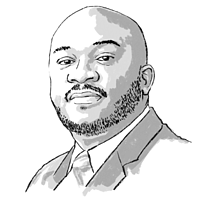Finding hope in early efforts to educate the formerly enslaved
Black people in America have long correlated learning with liberation, largely because of the difficulty endured acquiring an education and the opportunity it promised. Even today, the very act of teaching Black children is radical, not just because it often exposes racism, but because it presumes that education is a civil right.
When Black people in the South sought schooling during Reconstruction, right after the Civil War, they found refuge in Freedmen’s Schools, established by the Bureau of Refugees, Freedmen, and Abandoned Lands. Commonly known as the Freedmen’s Bureau, it was founded on March 3, 1865, when Congress passed an act to provide resources, including education, to the formerly enslaved. In July of 1866, another bill extended the bureau’s life for two years.
Decades later, after the landmark Brown v. Board of Education decision in 1954, Freedom Schools educated Black children in states that defied the desegregation law.
“Free” is the operative word, and this history is startlingly – and in my case, personally – close. The remnants of freedmen’s formal education lie just below the surface of daily life in parts of the South today.
As a preteen, I attended Schofield Middle School in Aiken, South Carolina, which was founded in 1871 as the Schofield Normal and Industrial School by Martha Schofield, a Quaker from Pennsylvania seeking to educate formerly enslaved people. It later became a public high school for African Americans and joined the local school system a year before the Brown v. Board of Education decision. It has served as a public middle school since the 1960s.
There’s another building originally created as a school for freedmen only minutes away from Schofield. The Immanuel Institute, which now functions as a cultural center, is a shining example of the influence of religious conscience operating on behalf of Black people.
The school was founded in 1890 by the Reverend William R. Coles, who came to Aiken with the approval of the Presbyterian Board of Missions for Freedmen. Enrollment hit its height in 1906, as 300 students attended, with some living on campus during the week because of challenges in transportation.
And just across the county line in Edgefield stand three buildings that used to belong to Bettis Academy and Junior College, named after Alexander Bettis. Once enslaved, he later joined other freedmen to start a Baptist church and then founded the school. Begun in 1881 to educate Black children, it closed in 1952 and has been listed on the state’s National Register since 1998. One of my early mentors, Abelle Nivens, studied there before starting the Minnie Palmore House, a preschool named after her mother, which I attended.
The short, three-year history of the Freedmen’s Bureau and the longer stretch of others’ efforts to educate those recently freed from slavery represents the best of us – government and/or religious institutions collaborating with everyday people in the spirit of civil rights and good conscience.
Juanita Campbell, the executive director of Immanuel Institute’s modern-day incarnation, the Center for African American History, Art and Culture, remarked upon the importance of the school’s aptly-named legacy.
“Religious organizations, schools, and Congress were making efforts to support African Americans who wanted to get educated,” Ms. Campbell writes in an email. “Immanuel Institute is one of 36 schools funded by Presbyterian missionaries in southern South Carolina. This was an important step towards equality, independence, and prosperity.”
I often hear prominent and successful Black people remark about “standing on the shoulders of giants,” a statement that honors the achievements and sacrifices of our ancestors. I can’t help but think about how many Americans, myself included, owe a debt of gratitude to the mothers and fathers of radical and progressive education.
Of course, this history flies in the face of the current national discussion about the relevance of Black studies and whether we should teach about racism and Reconstruction in schools. Proposals to whitewash history aren’t just dangerous; they recall generations of oppression.
“The landmarks are reminders of a time not so long ago when it was illegal for an entire people to know how to read and write,” Ms. Campbell writes. “They also are evidence of a time in history when African Americans were no longer denied access to education. Denying these rights was just another form of slavery that would have set African Americans back even further.”
The notion of radical and alternative education still prevails, she added – if not in public schools, in cultural centers and community groups.
“While the public schools may be forced to adhere to certain legislative decisions that potentially threaten the future of Black History education, organizations within the community are not bound by those policies,” Ms. Campbell says. “Our future generations have a right to know what their ancestors endured so that they could experience and thrive in freedom.”







